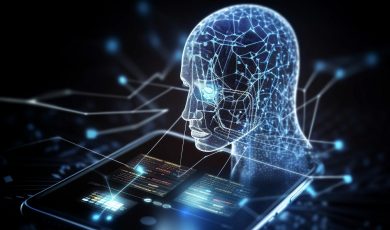Understanding Artificial Intelligence (AI), Machine Learning (ML), and Large Language Models (LLMs) in Simple Terms.
Artificial Intelligence (AI), Machine Learning (ML), and Large Language Models (LLMs) are rapidly transforming the way technology integrates into our daily lives, from simple personal assistants to the reshaping of entire industries. These terms have become commonplace, but their true meaning and the impact they have on our daily activities can be difficult to grasp.

That's why we are going to break down each of these concepts, explaining their characteristics, applications, and how they are changing the world around us...
What is Artificial Intelligence (AI)?
AI is a branch of computer science that aims to create systems capable of performing tasks that typically require human intelligence, such as pattern recognition, decision-making, and natural language understanding. AI can be classified into narrow AI, which focuses on specific tasks, and general AI, which aspires to replicate comprehensive human reasoning. Today, narrow AI is the most common and can be found in technologies such as voice assistants (Alexa, Siri), autonomous vehicles, and predictive analysis systems in healthcare or finance.
A key aspect of AI development is its ability to process vast amounts of data. As companies, governments, and organizations generate massive volumes of information, AI becomes an essential tool for processing, analyzing, and making data-driven decisions efficiently. This capability has opened up new possibilities in fields such as medicine, where AI is used to identify patterns in medical images and suggest diagnoses, or in scientific research, where it helps simulate complex biological or physical models.


What is Machine Learning (ML)?
Machine Learning is a subfield of AI that focuses on developing algorithms that allow machines to learn from data without being explicitly programmed to perform a task. Instead of writing detailed code for every possible scenario, ML systems use large datasets to find patterns and make decisions based on those patterns.
ML can be divided into three main types: supervised learning, unsupervised learning, and reinforcement learning. Supervised learning uses labeled data to train models, while unsupervised learning focuses on discovering patterns in unlabeled data. Reinforcement learning enables algorithms to learn from interactions with their environment, optimizing their performance through experience.
What are Large Language Models (LLMs)?
Large Language Models are a revolutionary technology in how we interact with machines using natural language. LLMs, such as ChatGPT, are trained on massive volumes of text data, allowing them to understand context, generate coherent responses, and perform language-processing tasks at an unprecedented level. From drafting emails to writing code, LLMs have a broad and growing range of applications.


